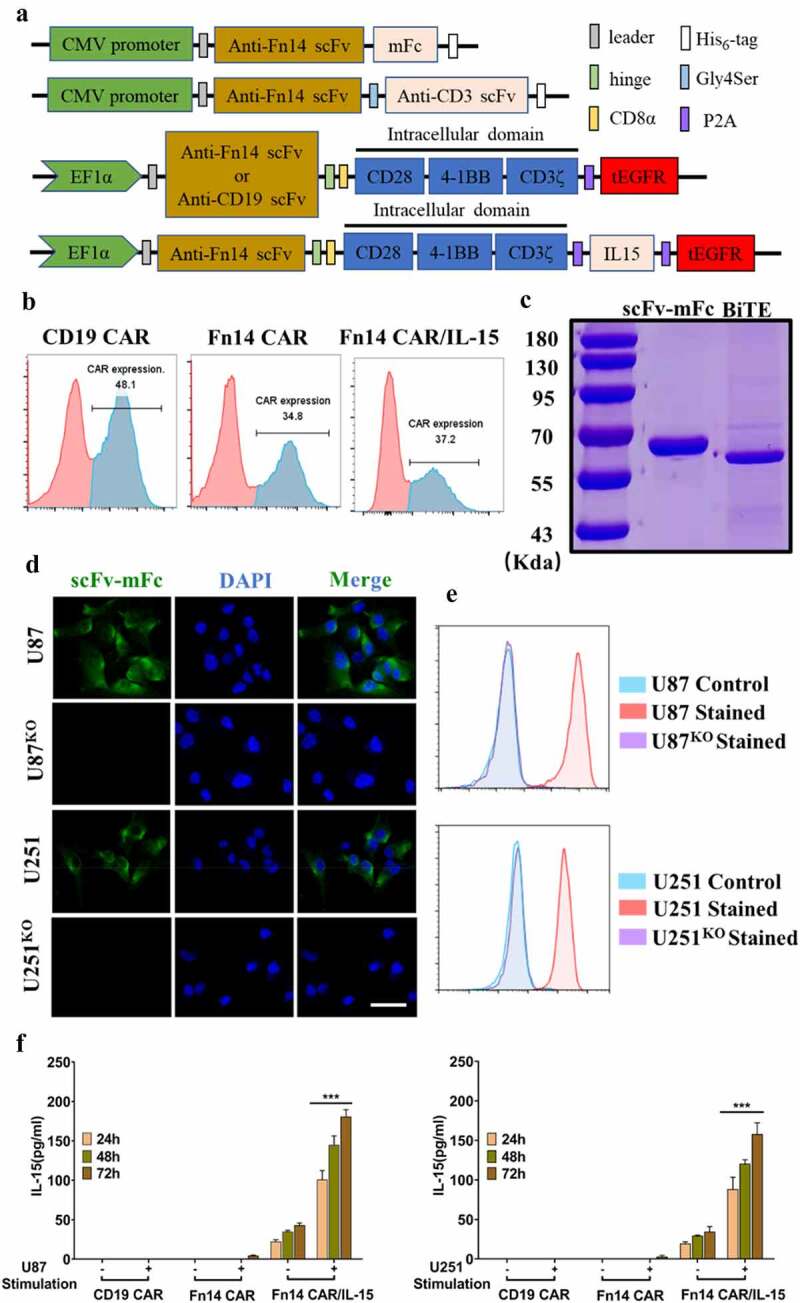Figure 3.

Construction of Fn14×CD3 BiTE and Fn14-specific CAR-T cells with or without IL-15. (A) Schematic representations of Fn14 scFv-mFc, Fn14×CD3 BiTE and Fn14-specific CAR-T cells with or without IL-15. (B) After transduction, expression of CD19 CAR, Fn14 CAR and Fn14 CAR/IL-15 on T cells was analyzed by flow cytometry. (C) SDS–PAGE of purified Fn14 scFv-mFc and Fn14×CD3 BiTE. (D, E) Fn14 scFv-mFc was used as primary antibody to validate the ability of Fn14-specific scFv to bind Fn14 on U87 and U251 cells. FACS-sorted U87KO and U251KO cells served as controls. Scale bar, 20 μm. (F) T lymphocytes transduced with the Fn14 CAR/IL-15 construct released IL-15 after antigen stimulation. ***P < 0.001
